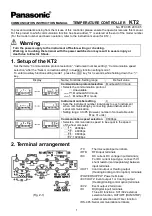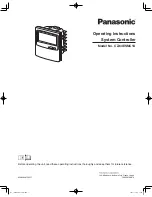
E-Kit “Servo with Control”
By using the Servo with Controls varied motion sequences can be shown on a model layout. A microprocessor controls the inclusive Servo, so that it will move in the one or the other
direction.
What is included in the E-Kit?
1x universal electronic / plate
1x microprocessor with software “Servo with Control”
1x Servo
4x pivotal lever
How to connect the Servo with Control?
1. First solder a cable between the co and L2X. Exactly like in the preceding figure (picture 1). It’s important to work exactly and to solder the cable accurately like this.
2. Then two cables ware soldered on the contacts BLACK / RED on the left side of the plate for the power supply (picture 2). So, one cable each will be soldered on the contact BLACK
and one will be soldered on the contact RED for the power supply.
3. Now, the connection of the Servo follows. In picture 3 and picture 4 you can see, that the Servo has to be connected outwardly with the orange cable.
4. Setting the microprocessor: You have to set the microprocessor in the right way into the escapement. It’s easier, if you bend the legs of the microprocessor a little bit together, but
just a little bit. Of course, the black foam material has to be removed before inserting the processor.
On the one side, the microprocessor has a notch and a point. The following picture (picture 5) shows this very clearly. So set the microprocessor with the indentation to the left. All
eight legs of the microprocessor sit well in the frame.
Note: If the microprocessor is set in the wrong way, the microprocessor can be destroyed! Thus, set the microprocessor exactly as you can see in picture 5. Pay attention to the point
and the notch.
5. Supervising the work carried out so far: Even if you are eager to connect the circuit to power now, you should always check the connections again.
Check list:
1. Is the cable between the c and L2X soldered in the right way (picture 1)?
2. Two cables are soldered on the contacts BLACK / RED for the power supply (picture 2)?
3. Servo wire is set with the orange cable outwardly (picture 5)?
4. Microprocessor is set in the right way (picture 5)?
5. Please check again, that the cable is not accidentally soldered on the SW terminal (picture 1). Then, the escapement won’t work.
6. First function test of the Servo with Control: Now the circuit can be connected to the model railway transformer. For this, both cables of the contacts BLACK / RED are connected to
the transformer: Continuous current output of the transformer (16 v alternating power AC). Now, the Servo should be set in motion. First the Servo will be turned in one direction, and
then you have to wait 5 seconds and then the Servo rotate back to the starting position. Then you have to wait 5 seconds and it will start again.
Which things you can move with the Servo?
Possible movements which can be realized with the servo generally differ from a vertical or horizontal motion on one side and a rotational movement on the other side.
First the easiest:
1. Moving figures:
It’s very easy to move figures with the Servo and very beautiful effects will result. A round platform will be set on the Servo. With a little piece of double-sided tape
the figures can be set on the rotary disc. With some imagination the Servo can be placed in a way that only the figure can be seen. In the following some samples (figures not inclusive):
From figure set NOCH 15110 a construction worker during the labor organization (he rotates and shows, what’s to do).
From figure set NOCH 15042 a miner (he rotates and turns on his heels).
From figure set NOCH 15110 a construction worker (he rotates and looks where to hack).
From figure set NOCH 15052 a chimney sweep (he moves in front of the house and looks for the chimney or fireplace).
From figure set NOCH 15091 some polices (they rotates during controlling the traffic).
2. Vertical linear motion
with the lever arms. Now, the crafts will be moved: Tipping of a truck load floor: Of course, a truck isn’t inclusive. So, let’s start: First choose a suitable lever
arm for the according motion. Then you have to create a wire for the linkage.
For this, a piece of wire from the tinker box will be formed into z-form and it will be put in the Servo arm.
Tip:
If you have really no steel wire, the following trick will help you: You take a piece of railway wire (copper) and you tin it on the whole length, and so you have a wire that you can
use here.
Tip:
As illustrated e.g. a blade of a crawler tractor can be moved upwards and downwards. To make it work as shown in the picture, the linkage wire needs a guide. In the easiest case
that’s a hole or a long hole in the model railway plate.
3. Rotary motion
for the rotation of a crane or an excavator. And again: of course the crane isn’t inclusive. For reaching a movable model like this, the following steps are necessary:
Tip:
First, a rotary axis has to be “organized”. For this, a little toothpick or matchstick, which can be sanded to a round shape accordingly are perfectly suitable. It has to be set into the
Servo carefully, so that a save fixation is given. Absolutely to avoid is the use of super glue, because it will flow into the Servo and the Servo will be destroyed. No other way: You have
to file and grind until the rotation axis is set perfectly and stably in the Servo.
Then a hole will be drilled, in the undercarriage of the carrying vehicle, e.g. with a small drill, so that the rotational axis can be inserted through it.
Now, only the crane housing has to be connected with the rotational axis. For this, you can use epoxy resin glue very well. Again you have to avoid, that the glue flows into the rotational
axis of the Servo and thus the Servo will be destroyed. It’s very easy to avoid this by turning the whole upside down. Like this, no glue can flow into the Servo.
As shown above a lot of models on the railway can be moved like that. The imagination knows no limits.
What else can you do with the Servo with Control?
In the microprocessor two programs are saved. Now, we need to activate the second program. Allowing to connect a push-button on the controlling and to trigger the movement of each
keystroke (the button isn’t inclusive). Also a contact switch of a model railway control desk which is equipped with push-buttons, e.g. for switch articles or signal magnet articles can be
used as a button. Now the servo isn’t reset automatically after 5 seconds, as the button has to be pressed first.


























